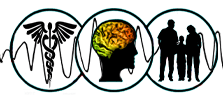In Minneapolis, Minnesota, a magnet school has implemented alternative interventions including neurofeedback. Autistic children were seen several days per week and within 7 weeks, reading levels soared upwards. John Anderson, MA, is in charge of this program and its success has spread to instrumentation and neurofeedback training in 7 more schools in the district.
Recently our office has had calls in follow-up to reading the June 1998 article on “How to Train Your Brain” and listening to National Public Radio’s “Saturday Edition” on May 16, 1998 on Neurofeedback in schools. The 14 minute radio program can be accessed on the web by using Real Audio at www.npr.org/programs. Two years ago The Learning Channel carried an hour documentary titled Minds to Crime in which neurofeedback was successfully used to treat inmates who were diagnosed with attention deficit disorder.
So why is this pairing of a neurotherapy and schools happening now? There might be many reasons such as the recent trend in school autonomy and self management, the proliferation of campus health clinics and mental health services and the common feeling among parents, teachers, and administrators that some existing problems that students have in the classroom are only moderately helped by the limited treatment HMO’s and Managed Care Companies offer students and their families. Technology is a hot ticket on most school campuses and biofeedback fits right in to that interest.
This writer has personally taught a few classes in the Hart High School District. Ten years ago, Behaviorally Emotionally Disturbed students at Saugus High School participated in a 10 week biofeedback and stress management training program which included exercises in relaxation training, direct psychophysiological feedback of hand temperature, muscle tension and sweat gland activity (indicators of nervous system arousal and relaxation), imagery exercises and self-esteem building. Although long term outcome was not measured, short term gains were reported by students, teachers, and the school psychologist most familiar with these students. Comparisons of muscle tension and hand temperature taken before the 10-week course and following the ten week course showed that students were able to control and relax their nervous systems. This program was repeated recently with a group of students at Sierra Vista Junior High School.
What does this mean in the long term? If schools can be a vehicle for fitness and health education, then certainly self regulation of the nervous system fits right in. The power of learning how to control autonomic nervous system function such as heart rate, blood pressure, muscle tension, blood flow to the hands and digestive tract is very important to the student taking a final exam or taking on a new social challenge. The ability to self regulate can last a lifetime and may have a profound effect on a person’s health later in life. When teased, bothered or even harassed by other students, how many options does a student have? Harass others in return, leave, or tattle? The ability to control one’s nervous system and thereby not react is a wiser and healthier choice. Who is going to teach that skill?
In any event, this work can only be carried on by people who have interest and time to find funding to build a local program that will be an asset to our community.
Research Articles on Biofeedback in Schools
Effectiveness and Feasibility of a Stress Management Program for 3rd Grade Students – Susan Hutchison, 1983
Effects of Biofeedback Assisted Relaxation Upon Classroom Behavior of Hyperkinetic Children – Bob Loux, 1979
The Use of EMG Feedback Training in Increasing Attention Span and Internalizing Locus of Control in Hyperactive Children – Richard T. Linn, 1980
An Experimental Study of Relaxation Training in Swedish Schools – Swen Setterlind, 1977
The Effects of EMG-Assisted Relaxation Training on the Academic Performance, Locus of Control, and Self-Esteem of Hyperactive Boys – Kathryn Denkowski, 1983
The Effects of the Relaxation Response on Self-Concept and Acting Out Behaviors – Oldfield, 1986
The Effects of Relaxation Training for Grade Twelve Students – Hiebert and Eby, 1985
Biofeedback Assisted Relaxation Ttraining in the Elementary Classroom – Zaichkowsky,
Applications of Biofeedback Relaxation Training to Exceptional Children – Carter
A Research Project in Relaxation Training for Emotionally Handicapped Students – Snyder, 1984
The Effects of the Relaxation Response on Self Concept and Acting Out Behaviors – Oldfield, 1986
Biofeedback Induced Relaxation Training as an Alternative for the Elementary LD Child – Omizo and Williams, 1982
Increasing Student “On-Task” Behaviors Through Relaxation Strategies – Oldfield and Petosa, 1986
Teaching Children to Relax – Humphrey, 1988, book
The Application of Biofeedback Training to High Achieving and High School Students – Batsis and Oleson, 1986
Training on Classroom Behavior, Attention Span, Locus of Control, and Self-Concept – Woodman, 1987
Jogging and Aerobics with Biofeedback as Stress Management for Impulsive Hyperactive Youthful Offenders – Creekmore, 1987
Catalysts to Creativity – Wells, 1984
Using EMG Biofeedback to Signal Hyperactive Children When to Relax – Christie, 1984
Warm Fingers, Cool Behavior – Hershey, 1983
Biofeedback and Cognitive Control in Children with Learning Disabilities – Kennedy, 1981
Research Articles on Neurofeedback in Schools
Boyd, W. D., & Campbell, S. E. (1998). EEG biofeedback in the schools: The use of EEG biofeedback to treat ADHD in a school setting. Journal of Neurotherapy, 2(4), 65-71.
Carmody, D. P., Radvanski, D. C., Wadhwani, S., Sabo, J. J., & Vergara, L. (2001). EEG biofeedback training and attention-deficit/hyperactivity disorder in an elementary school setting. Journal of Neurotherapy, 4(3), 5-27.
Rasey, H. W., Lubar, J. E., McIntyre, A., Zoffuto, A. C., & Abbott, P. L. (1996). EEG biofeedback for the enhancement of attentional processing in normal college students. Journal of Neurotherapy, 1(3), 15-21.
